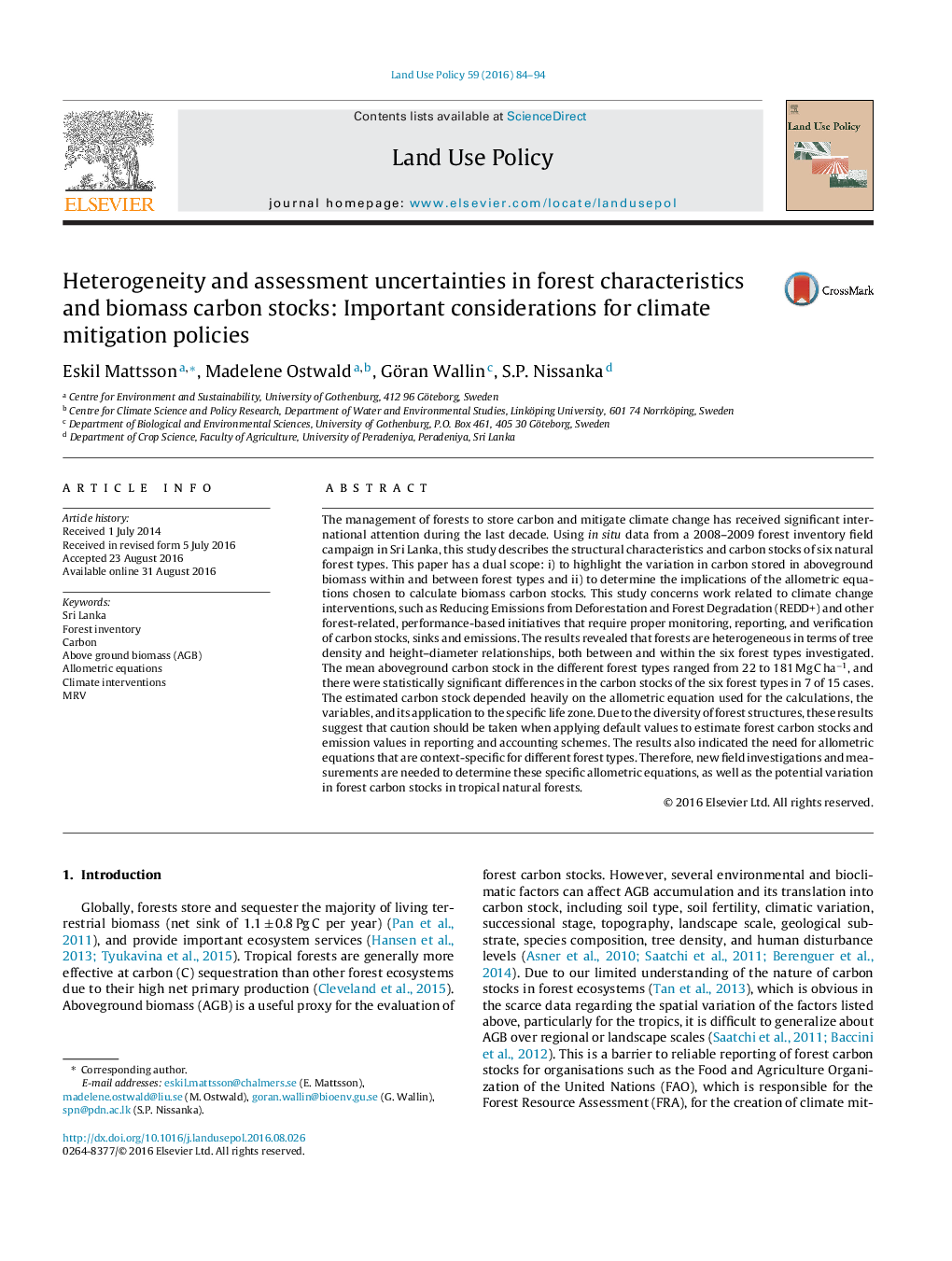| کد مقاله | کد نشریه | سال انتشار | مقاله انگلیسی | نسخه تمام متن |
|---|---|---|---|---|
| 6461482 | 1421824 | 2016 | 11 صفحه PDF | دانلود رایگان |
- The study describes structural features and carbon stocks of Sri Lankan forests.
- There are large variations in carbon stock within and between forest types.
- Uncertainties in carbon stock estimation influences forest conservation policies.
- Results call for caution when applying default values for estimating forest carbon stock.
- More forest-type specific research is needed to develop allometric relationships.
The management of forests to store carbon and mitigate climate change has received significant international attention during the last decade. Using in situ data from a 2008-2009 forest inventory field campaign in Sri Lanka, this study describes the structural characteristics and carbon stocks of six natural forest types. This paper has a dual scope: i) to highlight the variation in carbon stored in aboveground biomass within and between forest types and ii) to determine the implications of the allometric equations chosen to calculate biomass carbon stocks. This study concerns work related to climate change interventions, such as Reducing Emissions from Deforestation and Forest Degradation (REDD+) and other forest-related, performance-based initiatives that require proper monitoring, reporting, and verification of carbon stocks, sinks and emissions. The results revealed that forests are heterogeneous in terms of tree density and height-diameter relationships, both between and within the six forest types investigated. The mean aboveground carbon stock in the different forest types ranged from 22 to 181 Mg C haâ1, and there were statistically significant differences in the carbon stocks of the six forest types in 7 of 15 cases. The estimated carbon stock depended heavily on the allometric equation used for the calculations, the variables, and its application to the specific life zone. Due to the diversity of forest structures, these results suggest that caution should be taken when applying default values to estimate forest carbon stocks and emission values in reporting and accounting schemes. The results also indicated the need for allometric equations that are context-specific for different forest types. Therefore, new field investigations and measurements are needed to determine these specific allometric equations, as well as the potential variation in forest carbon stocks in tropical natural forests.
Journal: Land Use Policy - Volume 59, 31 December 2016, Pages 84-94
